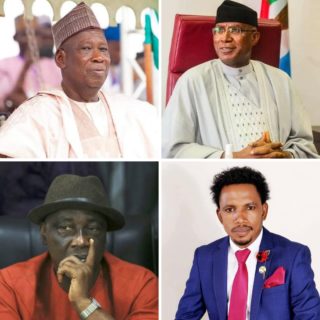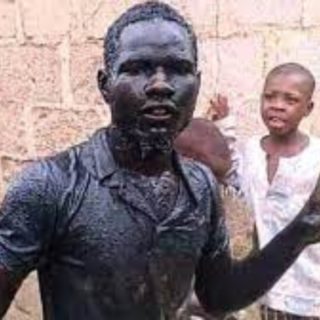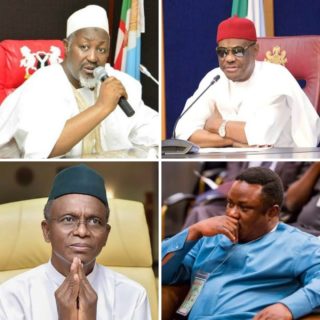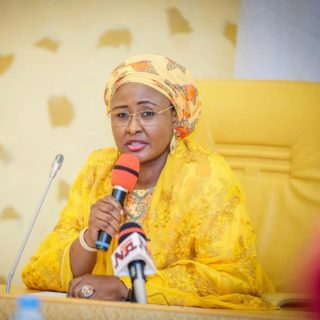The history of Nigeria is an epic story fit to give Game of Thrones a run for its money. Nigeria’s story is missing dragons, but there’s enough drama to fill the books, from cover to cover, for a best seller.
“Animals can be millionaires?”
Even though Nigeria, as we know it, wasn’t fully formed until 1914, it was in 1960 actual Nigerians took charge of its destiny. And when that independence came, our leaders had the chance to drive the country to the Promised Land or off the nearest cliff. They chose the nearest cliff.
The original idea was to be a democratic nation, but that master plan would be interrupted many times by military men with their own hard-ons for power.
To celebrate the International Day of Democracy, we compiled a brief history of how each period of democracy in Nigeria died brutal deaths since 1960.
First Nigerian Republic (1963 – 1966)
Nigeria became an independent country in 1960 but retained Queen Elizabeth II as head of state until it became a republic in 1963. The country adopted the parliamentary system of government practised by its recently-departed British colonialists.
Ethno-religious tension coloured much of Nigerian politics at the time, as it still does today. The administration of the Nigerian government was split along Western, Eastern and Northern regional lines, each with its own separate premiers. Abubakar Tafawa Balewa retained his post as Prime Minister, and Nnamdi Azikiwe became Nigeria’s first president in 1963.
He’s probably inside your pocket right now
The regional infighting and tension escalated when Nigeria’s first coup d’etat took place in January 1966. Soldiers overthrew the government and assassinated Balewa, as well as Ahmadu Bello and Samuel Akintola, the premiers of the Northern and Western regions respectively.
It was the first fall of the Nigerian republic, but it wasn’t the last.
Second Nigerian Republic (1979 – 1983)
One bloody counter-coup, a bloody civil war, a bloodless coup and a failed coup attempt later, the military government of Olusegun Obasanjo transitioned Nigeria back to democracy in 1979.
This time, the parliamentary system of government from the first republic was dumped in the trash, and Nigeria opened its doors to the presidential system we still practice today.
Five parties contested the elections and won seats in the National Assembly. Shehu Shagari of the National Party of Nigeria (NPN) won the presidential election that defined the second republic.
He served his first term, as Nigeria’s first democratic president, without much hassle. But it was when he made the inevitable push for a second term that wahala started.
Shagari was re-elected for a second term in 1983, but his opponents accused him of ojoro. They insisted the election was marred by violence and contested the result in court. Military actors used the instability caused by this conflict to stage a coup that ended the second republic in December 1983.
The man who took over from Shagari as a military dictator was Muhammadu Buhari. You may know him if you’re reading this in 2022.
Third Nigerian Republic (1992 – 1993)
Nigeria’s third republic is the shortest of them all. Buhari’s post-second republic reign lasted for 20 months before he was overthrown by General Ibrahim Babangida in 1985. Babangida promised to hand over to a civilian government as soon as possible, but he conveniently lasted in office for eight years.
Babangida’s military government conducted gubernatorial and legislative elections in December 1991. The winners took office in January 1992, technically setting off the third republic. But the presidential election was where the key spoilt the dog’s mouth.
After much drama, the government scheduled the presidential election for June 12th, 1993. MKO Abiola of the Social Democratic Party (SDP) and Bashir Tofa of the National Republican Convention (NRC) were the main candidates for the election.
Even though Abiola was widely considered the winner of the election, Babangida cut his victory dance short by pausing the counting of votes and annulling the election over allegations of electoral fraud.
Nigeria was scheduled to return fully to democratic rule on August 27th, 1993, but Babangida stepped down a day earlier with the mess of annulment still hanging about. He handed over the government to an interim team headed by Ernest Shonekan who was tasked with completing Nigeria’s transition to democracy.
Babangida created a mess, failed to clean it up and said:
Shonekan’s government lasted only three months before General Sani Abacha overthrew it and became Nigeria’s new military dictator in November 1993.
That was how Nigeria’s third republic ended before it even began. But Abacha died suddenly in 1998, paving the way for an Abdulsalami Abubakar-led team to transition Nigeria to the fourth republic in 1999. And Nigerians lived happily ever after.
May affliction not rise a fourth time.




